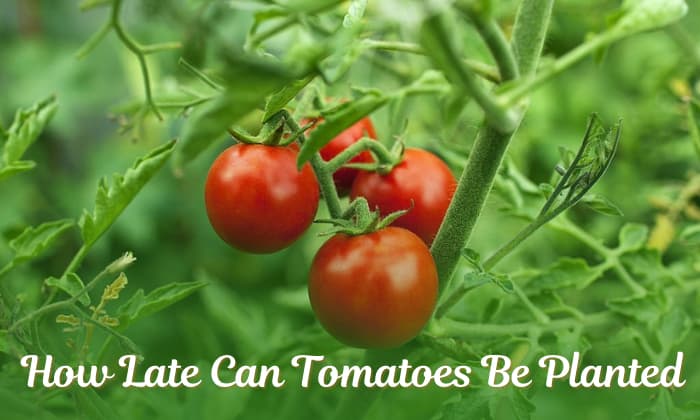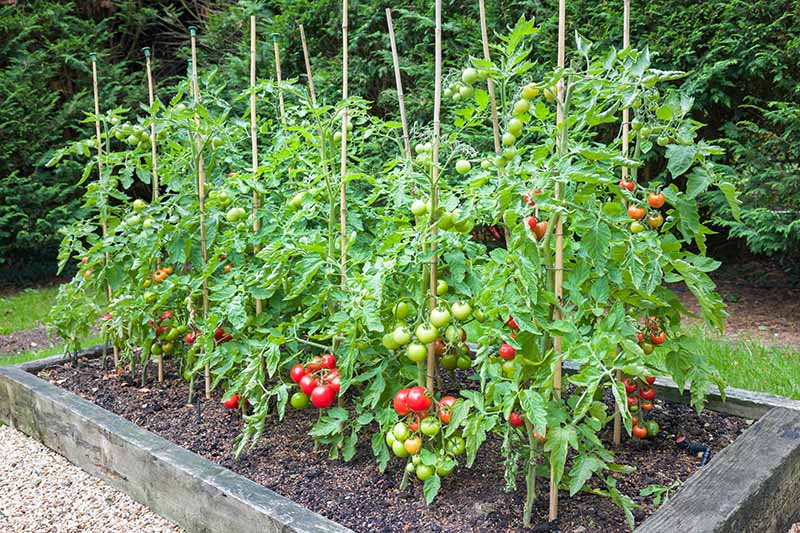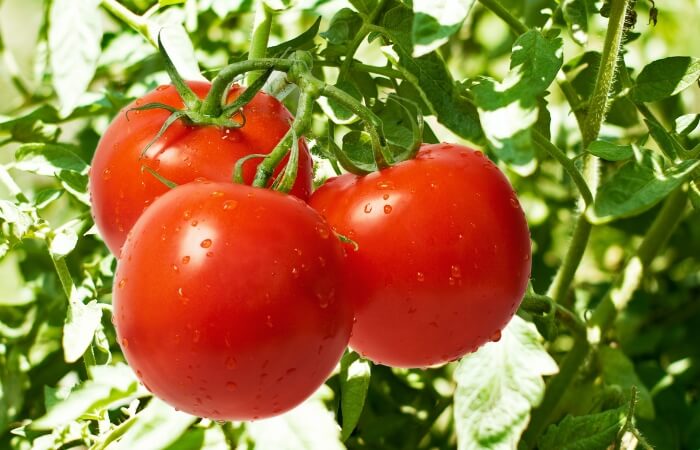Tomatoes, a popular and versatile fruit, have long been cherished by gardeners for their vibrant colors and rich flavors. However, determining the appropriate time to plant tomatoes can be a daunting task for novice and experienced gardeners alike. In this article, you will explore the factors that affect the ideal planting time for tomatoes, along with essential tips to ensure successful growth and a bountiful harvest. By understanding the influence of climate, soil conditions, and specific tomato varieties, you will gain valuable insights into how late you can plant tomatoes and maximize your yield.
Understanding Tomato Planting Guidelines
Tomatoes are one of the most popular and widely grown vegetable plants in home gardens. To ensure a successful tomato harvest, it is crucial to understand the planting guidelines. This article will provide a comprehensive overview of tomato planting, covering various aspects such as types of tomatoes, ideal planting conditions, and determining the right time to plant.
Types of tomatoes
Before delving into the specifics of tomato planting, it is essential to understand the different types of tomatoes available. There are numerous tomato varieties, each with its own unique characteristics and growth requirements. Determinate tomatoes, also known as bush tomatoes, grow to a predetermined height and produce most of their fruit in a short period. Indeterminate tomatoes, on the other hand, continue to grow and produce fruit throughout the entire growing season.
Aside from growth habits, tomatoes come in various shapes, sizes, and colors. Some common types include beefsteak tomatoes, cherry tomatoes, Roma tomatoes, and heirloom varieties. Understanding the different types of tomatoes will allow you to choose the most suitable variety for your garden.
Ideal planting conditions
To achieve optimal growth and yield, tomatoes require specific planting conditions. Firstly, tomatoes thrive in full sun, so it is crucial to select a location that receives at least six to eight hours of direct sunlight per day. Additionally, tomatoes prefer well-drained soil with a pH level between 6.0 and 7.0. Conducting a soil test can help determine the pH level and make any necessary adjustments through soil amendments.
Adequate spacing is also essential when planting tomatoes. Each tomato plant should have enough space to grow and receive ample air circulation. This helps prevent diseases and allows for better access to light and nutrients. Generally, tomato plants should be spaced approximately 18 to 36 inches apart, depending on the variety.
Determining the right time to plant
The timing of tomato planting is crucial for a successful harvest. While tomatoes are warm-season crops, they are sensitive to frost and cold temperatures. Planting too early in the spring can result in stunted growth or damage to the plants. On the other hand, planting too late can limit the time available for the tomatoes to mature before the arrival of cold weather.
The ideal time to plant tomatoes varies depending on the climate and the specific variety. In areas with a short growing season, it is recommended to start tomato seeds indoors or purchase mature seedlings. This allows the plants to establish and grow before transplanting them outdoors once the danger of frost has passed.
Planting Tomatoes in Early Spring
Preparing the soil
Before planting tomatoes in early spring, it is crucial to prepare the soil properly. Start by removing any weeds or debris from the area where the tomatoes will be planted. Loosen the soil with a garden fork or tiller to improve its texture and allow for better root penetration.
Adding organic matter, such as compost or well-rotted manure, to the soil can provide essential nutrients and improve water retention. Mix the organic matter thoroughly with the existing soil, aiming for a well-balanced and nutrient-rich planting bed.
Germinating tomato seeds
For early spring planting, growing tomatoes from seeds indoors is often the most practical approach. This allows for better control over the growing conditions and ensures that the seedlings are ready for transplanting when the weather and soil conditions are suitable.
To germinate tomato seeds, sow them in seed-starting trays or pots filled with a high-quality seed starting mix. Plant the seeds approximately 1/4 inch deep and water them gently to ensure moisture penetration. Place the trays or pots in a warm location, ideally with temperatures between 70-80°F (21-27°C).
Transplanting seedlings outdoors
Once the tomato seedlings have developed true leaves and are strong enough to handle outdoor conditions, they can be transplanted into the garden. It is important to harden off the seedlings gradually before transplanting. This involves exposing them to outdoor conditions for a few hours a day, gradually increasing the duration over a one to two-week period.
When transplanting tomato seedlings, dig a hole slightly larger than the root ball of the seedling. Gently remove the seedling from its container, being careful not to damage the root system. Place the seedling in the hole, backfill with soil, and firm gently. Water the newly transplanted seedlings thoroughly to ensure proper establishment.

Planting Tomatoes in Late Spring or Early Summer
Preparing the soil
Late spring or early summer is another suitable time to plant tomatoes, especially for gardeners who prefer to purchase mature seedlings rather than starting from seeds. Like in early spring planting, it is essential to prepare the soil adequately before transplanting.
Remove any weeds or debris from the planting area and loosen the soil. If the soil lacks nutrients, consider incorporating organic matter or applying a balanced fertilizer following the manufacturer’s instructions. Remember to test the soil’s pH level and adjust it if necessary.
Purchasing tomato seedlings
For late spring or early summer planting, purchasing tomato seedlings from a reputable nursery or garden center is a convenient option. Look for healthy seedlings with sturdy stems and vibrant foliage. Avoid transplants that appear root-bound or have signs of disease or damage.
Inspect the seedlings carefully to ensure they are free from pests such as aphids or whiteflies. It is also crucial to match the tomato variety with the desired growth habit and fruit characteristics.
Transplanting mature tomato plants
Transplanting mature tomato plants is similar to transplanting seedlings. Select a planting location that provides full sun and well-drained soil. Dig a hole slightly larger than the root ball of the tomato plant and place it in the hole, ensuring that the soil level is equal to or slightly above the plant’s root ball. Firm the soil gently around the plant and water thoroughly.
When transplanting mature tomato plants, it is important to provide support such as stakes or cages to ensure the plants’ upright growth. This helps prevent the plants from leaning or sprawling on the ground and reduces the risk of fruit rot or damage.
Planting Tomatoes in Mid-Summer
Choosing heat-tolerant tomato varieties
In regions with hot summers, planting tomatoes in mid-summer can be challenging due to the intense heat. However, selecting heat-tolerant tomato varieties can increase the chances of a successful harvest. Look for cultivars specifically bred for heat tolerance or those that have been proven to perform well in hot climates.
Heat-tolerant tomato varieties often have traits such as thick foliage to provide shade to the fruit, heat-resistant fruit that resists sunscald, and an ability to set fruit in high temperatures. These varieties can help mitigate the stress caused by the summer heat and maximize fruit production.
Preparing the soil
Regardless of the season, preparing the soil is a critical step in tomato planting. In mid-summer planting, ensure that the soil is adequately amended with organic matter to improve its water-holding capacity. Consider adding a layer of mulch around the plants to help conserve soil moisture and regulate soil temperature.
Providing shade and water
In mid-summer, it is crucial to protect tomato plants from excessive heat and sun. Provide shade to the plants during the hottest parts of the day using shade cloth or by planting taller crops nearby to create natural shade. Ensuring an adequate water supply is also vital, as tomatoes have high water requirements, especially in hot weather. Water deeply and regularly, aiming to keep the soil consistently moist but not waterlogged.
Monitoring for pests and diseases
The hot and humid conditions of mid-summer are favorable for various pests and diseases that can affect tomato plants. Regularly inspect the plants for signs of pest damage, such as chewed leaves or discolored fruit. Common tomato pests include aphids, whiteflies, and tomato hornworms.
To prevent diseases, avoid overhead watering that can promote fungal growth. Mulching around the plants can also reduce the risk of soil-borne diseases. Regularly scout for early signs of diseases such as blight, wilts, or leaf spots, and take appropriate measures if necessary, such as applying organic fungicides or removing affected plants.

Planting Tomatoes in Late Summer and Fall
Selecting cool-weather tomato varieties
Late summer and fall planting allows gardeners to extend the tomato growing season and enjoy a fall harvest. However, it is essential to select tomato varieties that are suitable for cool weather. Cool-weather tomato varieties are specifically bred to thrive in lower temperatures and have a shorter time to maturity.
Look for tomato varieties labeled as “early maturing” or “cold tolerant.” These varieties are more likely to produce ripe fruit before the first frost hits. Additionally, consider choosing determinate varieties that produce a concentrated yield within a shorter timeframe, ensuring a higher chance of harvesting mature fruit.
Preparing the soil
Similar to other planting seasons, preparing the soil for late summer and fall planting is crucial. Clear the planting area of any weeds or debris, loosen the soil, and amend it with organic matter. A soil test can help determine if any additional nutrients are required and adjust the pH level if necessary.
Transplanting seedlings or mature plants
For late summer and fall planting, gardeners have the option of transplanting seedlings or mature tomato plants. If starting from seeds, it is recommended to sow them indoors approximately six to eight weeks before the desired planting date. Once the seedlings have developed a robust root system and are large enough to handle, they can be transplanted outdoors.
When transplanting, ensure that the soil is warm enough to support root growth and that the threat of frost has passed. Similar to other planting seasons, dig a hole slightly larger than the root ball and gently place the seedling or mature plant in the hole. Water thoroughly after transplanting to promote root establishment.
Extending the growing season
To maximize the growing season and protect tomato plants from the colder temperatures of fall, consider implementing various strategies. Using season extenders such as row covers, cold frames, or polytunnels can provide additional insulation and protection against frost.
Additionally, consider utilizing techniques like mulching and applying organic foliar sprays rich in potassium to increase the plants’ cold tolerance. Regularly monitor weather forecasts and be prepared to cover or provide additional protection to the tomato plants if unexpected frost or cold snaps occur.
Planting Tomatoes in Tropical Climates
Understanding the challenges
Planting tomatoes in tropical climates presents unique challenges due to the year-round warm temperatures and high humidity. Tropical regions often have long growing seasons, but they may also experience intense rainfall and disease pressure. It is essential to choose appropriate tomato varieties and implement specific strategies to ensure successful cultivation.
Choosing suitable tomato varieties
When planting tomatoes in tropical climates, selecting suitable tomato varieties is paramount. Look for varieties that are resistant to common tropical diseases such as bacterial wilt, fusarium wilt, or nematodes. Additionally, consider choosing varieties that can handle the high humidity and heat prevalent in tropical regions.
Some popular tomato varieties for tropical climates include “Celebrity,” “Arkansas Traveler,” and “Super Sweet 100.” These varieties are known for their disease resistance and ability to overcome the challenges posed by tropical conditions.
Timing and preparation
Timing plays a crucial role in tomato planting in tropical climates. As these regions often have a more consistent temperature range, tomatoes can be planted year-round. However, it is advisable to avoid planting during the peak of the rainy season, as excessive moisture can lead to fungal diseases and hinder plant growth.
Proper soil preparation is essential in tropical climates as well. Loosen the soil and amend it with organic matter to improve its nutrient content and drainage. Implementing practices such as crop rotation and intercropping can help prevent the buildup of diseases and pests.
In conclusion, understanding tomato planting guidelines is essential for a successful harvest. By considering the different types of tomatoes, ideal planting conditions, and determining the right time to plant, gardeners can ensure optimal growth and yield. Whether planting in early spring, late spring or early summer, mid-summer, late summer and fall, or tropical climates, following specific strategies will help maximize the chances of growing healthy tomato plants and enjoying a bountiful harvest.



